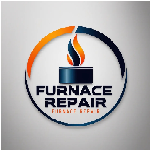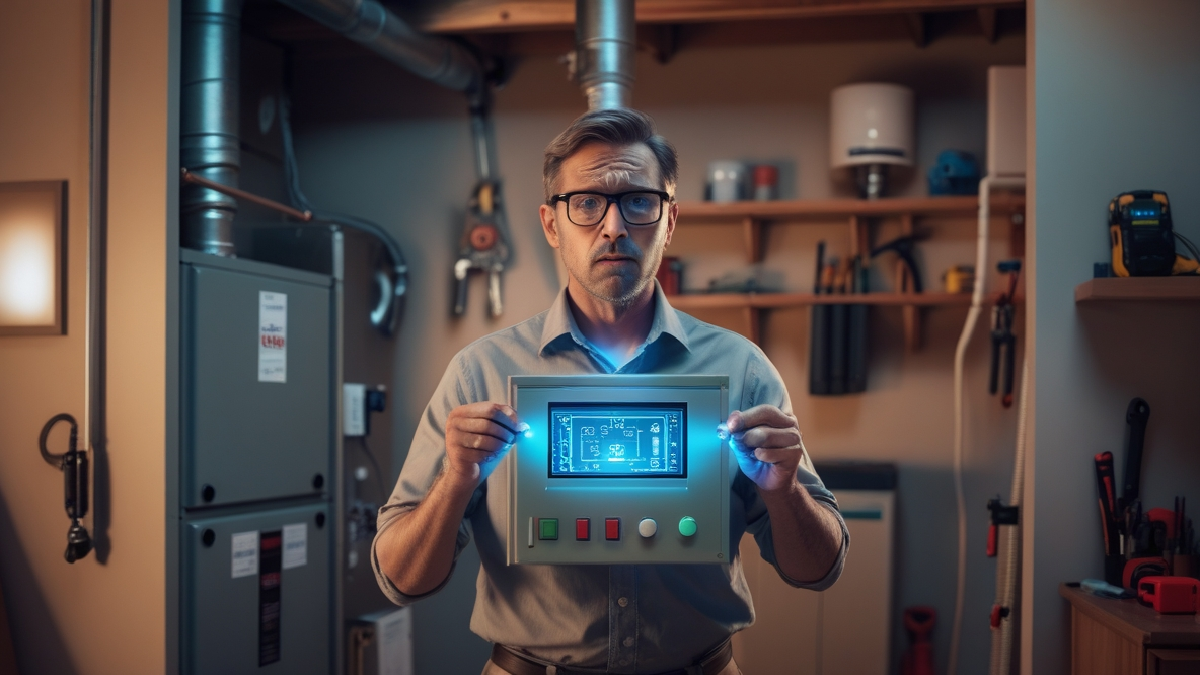Understanding Furnace Control Board Repair: An Essential Guide for Homeowners
Maintaining a warm and comfortable home during the colder months is a priority for homeowners across the United States. Central to this comfort is the furnace, a complex system that requires proper care and occasional troubleshooting. Among its key components is the furnace control board, often referred to as the brain of the heating system.
When it malfunctions, the entire furnace can become unresponsive, leaving you cold and frustrated. Fortunately, understanding the basics of furnace control board repair can empower homeowners to identify issues early and undertake simple repairs safely, saving both time and money.

This comprehensive guide aims to demystify furnace control board repair, providing practical troubleshooting tips, safety precautions, and step-by-step instructions. Whether you’re a DIY enthusiast or a homeowner eager to learn more about your heating system, this article will equip you with the knowledge needed to handle common control board problems confidently. We will explore what a control board does, how to recognize signs of failure, and how to perform repairs properly, Furnace Control Board Repair ensuring your furnace remains reliable and efficient.
What Is a Furnace Control Board and Why Is It Important?
Before delving into troubleshooting and repairs, it’s essential to understand what a furnace control board is and its role within your heating system. The control board, also known as the circuit board or control module, is an electronic component that functions as the command center for your furnace. It receives input signals from various sensors, thermostats, and safety switches, then processes this information to control the operation of different furnace components.
The control board manages critical functions such as igniting the burner, activating the blower motor, and regulating temperature settings. It ensures that the furnace operates efficiently, Furnace Control Board Repair safely, and in accordance with user preferences. If the control board malfunctions, it can lead to a range of issues, from the furnace refusing to turn on to erratic cycling or continuous operation. Recognizing the importance of this component underscores why timely diagnosis and repair are vital for maintaining a reliable heating system.
In essence, the control board acts as the system’s conductor, orchestrating various parts to work harmoniously. When it fails, the entire system can become unresponsive or unsafe, making prompt troubleshooting essential.
Common Signs of a Faulty Furnace Control Board
Detecting problems early can prevent further damage and costly repairs. Homeowners should be vigilant for the following common signs indicating potential control board issues:
First, if your furnace fails to turn on or respond to thermostat signals, it could be a sign that the control board isn’t sending or receiving the proper signals. Similarly, frequent cycling—where the furnace turns on and off rapidly without reaching the desired temperature—may point to a control board malfunction. Another indicator is the blower running continuously, even when the system isn’t actively heating, which can be caused by faulty relay operation on the control board.
Error codes displayed on the furnace’s diagnostic panel are also a clear sign of a problem. Modern furnaces are equipped with digital displays that provide specific codes to help identify issues. Unusual noises, such as clicking or buzzing sounds, or flickering lights from the furnace can also signal control board trouble. Furnace Control Board Repair Lastly, if your furnace shows no response at all—no power, no lights, and no activity—this could be due to a failed control board or related electrical issues.
While these symptoms are helpful clues, it’s important to remember that other components, such as sensors or wiring, can cause similar issues. Therefore, a thorough diagnosis is necessary to confirm whether the control board is the root cause.
Safety Precautions Before Starting Furnace Control Board Repair
Working with electrical components always carries risks, so safety must be your top priority. Before attempting any repair, ensure the furnace is completely powered down to prevent electrical shock or accidental activation. Turn off the circuit breaker dedicated to your furnace and wait at least five minutes to allow residual electrical energy to dissipate.
Wearing protective gear such as insulated gloves and safety glasses protects against accidental shocks or debris. Make sure your workspace is well-lit and free of clutter, which can cause slips or mishaps. Furnace Control Board Repair Never attempt repairs if you’re unsure of your skills or if the electrical wiring looks damaged or corroded. If at any point you feel uncomfortable or uncertain, it’s best to contact a licensed HVAC professional.
Remember, working with gas-powered furnaces involves additional safety considerations. If your furnace uses natural gas or propane, ensure the gas supply is shut off before beginning any work to prevent leaks or potential explosions. When in doubt, err on the side of caution and seek expert assistance.
Tools and Materials Needed for Furnace Control Board Repair
Preparing the right tools and materials beforehand can make the repair process smoother and safer. Basic tools include a Phillips and flat-head screwdriver for removing panels and securing components. A multimeter is essential for testing electrical continuity and voltage levels, helping you diagnose whether the control board or other components are faulty.
A flashlight can improve visibility inside the furnace. You will also need replacement control boards compatible with your furnace model. Furnace Control Board Repair Always verify compatibility by checking your furnace’s manual or manufacturer’s specifications. Additional materials might include terminal connectors, fuses, or relays, depending on your diagnosis.
Having these items ready before you begin ensures a more efficient repair process and reduces the risk of making mistakes during installation.
Step-by-Step Troubleshooting Tips for Furnace Control Board Issues
Troubleshooting a furnace control board involves a systematic approach to identify the root cause of the problem. Here’s a detailed step-by-step guide:
1. Check for Power Supply and Circuit Breaker
Start by verifying that the furnace is receiving power. Locate your home’s electrical panel and ensure the circuit breaker assigned to the furnace is in the ON position. If it has tripped, reset it and observe whether the furnace responds. If the breaker trips again immediately, there may be an electrical overload or short circuit, which requires professional diagnosis.
2. Inspect the Furnace for Visible Damage
Remove the access panel to expose the control board. Carefully examine it for signs of physical damage such as burnt components, corrosion, or broken wires. If the control board shows visible damage, it’s likely defective and needs replacement.
3. Test the Control Board with a Multimeter
Using a multimeter, check for continuity across the control board’s terminals and verify voltage levels. Consult your furnace’s wiring diagram to identify the correct voltage ranges. If the control board isn’t receiving power or isn’t outputting signals correctly, it may be faulty.
4. Reset the Furnace and Observe Error Codes
Many modern furnaces display error codes on a digital panel. Turn off power to the furnace for a few minutes, then turn it back on to reset the system. Record any error codes that appear and refer to your manual to interpret them. These codes can provide valuable clues about the specific issue.
5. Test Safety Switches and Sensors
Faulty safety switches or sensors can mimic control board failures. Test components such as the limit switch, flame sensor, and pressure switch for proper operation using your multimeter. Replace any defective sensors before concluding that the control board is at fault.
How to Replace a Faulty Furnace Control Board
Once you’ve confirmed that the control board is defective, replacement is typically straightforward. Follow these detailed steps:
1. Disconnect Power and Gas Supply
Ensure the furnace is powered off by switching off the circuit breaker. If your furnace uses natural gas or propane, shut off the gas supply to prevent leaks or accidental ignition.
2. Remove the Old Control Board
Locate the control board, usually behind an access panel inside the furnace. Use a screwdriver to remove the panel. Carefully disconnect the wiring harnesses attached to the control board, taking note of their positions. Photographing the wiring setup can help during reinstallation.
3. Install the New Control Board Furnace Control Board Repair
Connect the wiring harnesses to the new control board exactly as they were on the old one. Secure the new board in place with screws, ensuring it’s mounted firmly and correctly aligned.
4. Restore Power and Test the System
Turn the power back on and observe the furnace’s startup process. Check for error codes and listen for normal operation of the blower, igniter, and other components. If everything functions correctly, the repair is successful.
Additional Tips for Maintaining Your Furnace Control Board
Prevention is always better than cure. Regular maintenance can prolong the lifespan of your furnace control board and improve overall system reliability. Periodically inspect electrical connections for corrosion, loose wires, or signs of wear. Keep the furnace area clean and free of dust, debris, or obstructions that could lead to overheating.
Scheduling annual professional inspections can help identify potential issues before they become serious. Furnace Control Board Repair If your furnace control board repeatedly fails despite proper operation and maintenance, it may indicate underlying electrical problems or compatibility issues. Consulting an HVAC professional in such cases can prevent recurring failures and ensure your system remains in optimal condition.
Conclusion: Empowering Homeowners to Handle Furnace Control Board Troubleshooting
Understanding the fundamentals of furnace control board repair empowers homeowners to take an active role in maintaining their heating systems. While some issues can be addressed with basic troubleshooting and component replacement, safety always comes first. Furnace Control Board Repair Never hesitate to seek professional help if you’re unsure about any step or if electrical or gas safety is involved.
With proper knowledge, tools, and precautions, you can confidently diagnose common control board problems, perform necessary repairs, and keep your home warm and safe throughout the winter season. Regular maintenance and prompt troubleshooting can extend your furnace’s lifespan and ensure reliable operation when you need it most.


Leave a Reply